Hannah Clarke inquest hears of moments overlooked that could have got ‘high risk’ Rowan Baxter off the streets
Body-worn footage of Hannah Clarke’s killer refusing to be interviewed has been shown to the inquest into her death as a senior constable who issued a police protection notice did not look up a risk assessment that showed he was a “high risk”. SEE HIS REACTION TO POLICE
Police & Courts
Don't miss out on the headlines from Police & Courts. Followed categories will be added to My News.
A senior constable who issued Hannah Clarke’s killer a police protection notice did not look up a risk assessment that showed he was a “high risk”, and then gave him a notice to appear instead of taking him to the watch house, the inquest into her death has heard.
The officer, who on December 29, 2019 served Hannah’s estranged husband Rowan Baxter with a police protection notice and to recover four-year-old Laianah, who Baxter had abducted on Boxing Day, acknowledged he had not read the entire notice and was not aware Laianah had been taken by force.
He also told the inquest he did not take Baxter to the watch house for breaching a domestic violence order by assaulting his estranged wife because Baxter had “nil criminal history”.
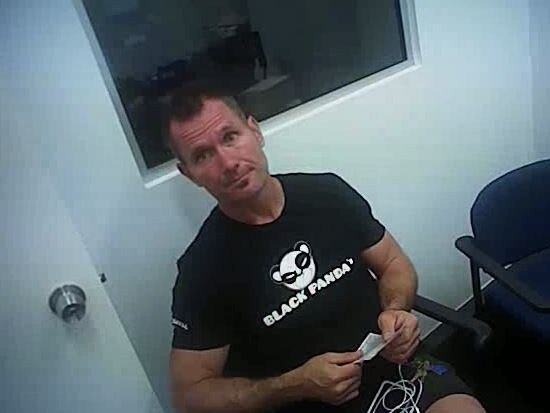
Meanwhile, Queensland Police Union president Ian Leavers has told the inquest into the deaths of Hannah Clarke and her three children that domestic violence training for young officers was lacking.
He said due to the lack of training, many officers felt they were letting victims and the community down, “through no fault of their own”.
Mr Leavers is among the witnesses called to give evidence on the seventh day of the inquest.
Police witnesses and domestic violence support service workers are also expected to take the stand to give evidence about their interactions with the family.
Meanwhile, an officer appointed to the Vulnerable Persons Unit has admitted that while the role is for “specialist officers”, she had been given no specific training ahead of her appointment.
Hannah was driving her three children, Aaliyah, 6, Laianah, 4 and Trey, 3, to school on the morning of February 19, 2020, when she was ambushed by her estranged husband.
Rowan Baxter jumped into her car as she was leaving her parents’ Camp Hill home and told her to “just drive”.
The inquest has heard he was carrying a jerry can of fuel and had a knife.
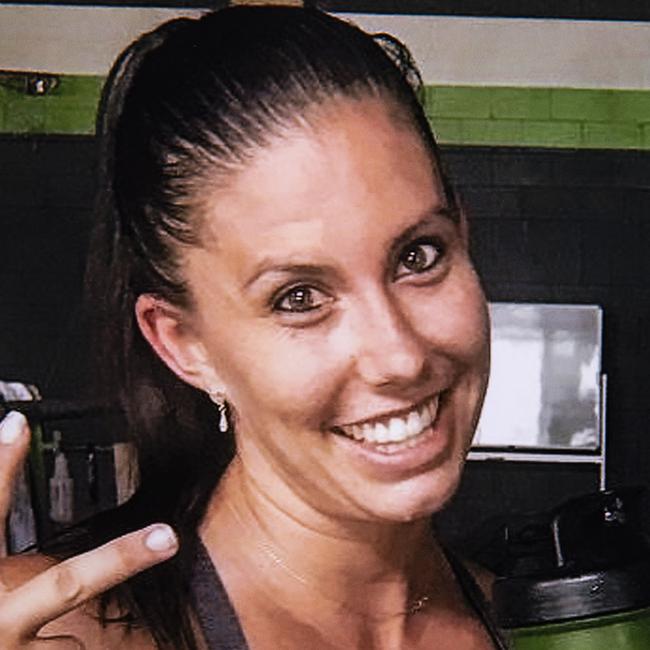
Hannah drove a short distance before spotting a man washing his car and pulled over to ask for help.
Baxter doused Hannah and the children with fuel and set them alight as Hannah tried to fight him off.
The deaths of Hannah and her children sparked a national conversation about domestic violence.
Cop ‘didn’t read’ police protection notice he served on Baxter
Senior Constable Justin Kersey went to visit Baxter at 7am on December 29, 2019.
He told the inquest he went to the house to serve Baxter with a police protection notice and to recover four-year-old Laianah.
The officer acknowledged he had not read the entire notice and was not aware Laianah had been taken by force.
“I didn’t read all the grounds,” he said.
Sen Const Kersey said he had had no prior involvement with any member of the family.
A recording of the interaction was played to the court, in which Baxter can be seen walking around with Laianah on his left hip.
Sen Const Kersey tells Baxter he is there to serve him with a Police Protection Notice and a domestic violence application.
“What’s this for?,” Baxter asks.
“What, for what?”

Baxter tells the officer he rang police the night before and was on hold for about an hour.
The officer explains the conditions of the order to Baxter, including that he not approach within 100m of Hannah and not contact or attempt to contact her or the children.
Sen Const Kersey informs Baxter that because he has now been served with the order, his proximity to Laianah means he is now not complying with it and the little girl needs to go with police to be returned to Hannah.
The court heard Baxter tried to assert that the abduction incident was not a big deal and there was no distress caused to anyone.
The court heard on a later date, Sen Const Kersey was doing foot patrols at a shopping centre when he again spoke to Baxter.
A member of the public told officers they heard a man say to someone on the phone “I can’t go in there, the cops are there”.
It was unclear whether that person was Baxter but he was the person they spoke to when they walked out of the shop.
Sen Const Kersey asked Baxter to accompany him to the Police Beat.
Sen Const Kersey said when he approached Baxter at the shopping centre about being wanted for breaching a domestic violence order, he was not aware Baxter was also wanted on the charge of assault occasioning bodily harm.
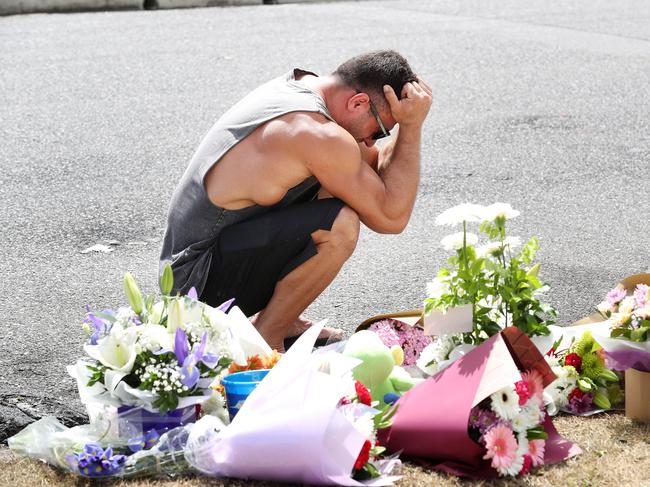
The inquest was shown the officer’s body-worn footage of Baxter sitting in the police beat office where he refused to be interviewed.
The officer informed Baxter that he was alleged to have grabbed Hannah after she spotted photographs of herself on the back seat of his car.
While speaking to someone on the phone, the officer can be heard saying: “I was the one who served him with the order … so I understand his history.”
Baxter can be seen folding his arms, shaking his head and clenching his jaw.
Sen Const Kersey can be heard telling Baxter he would be taken through the watch house.
But then he issued Baxter with a notice to appear.
Asked why, having six weeks earlier served Baxter with a police protection notice and having recovered a child, did he not take Baxter to the watch house for breaching a domestic violence order by assaulting his estranged wife, the officer said Baxter had “nil criminal history”.
“Because this was his first offence. There was already no contact conditions covered under the … order,” he said.
“Yes, there were risks.
“But again, with the human rights act coming in early that year, we made a decision under the circumstances … I made the decision to issue a notice to appear.”
Sen Const Kersey said after Baxter left, he realised there was an additional charge that had not been included on the notice to appear and set about completing a new one that included a charge of assault occasioning bodily harm.
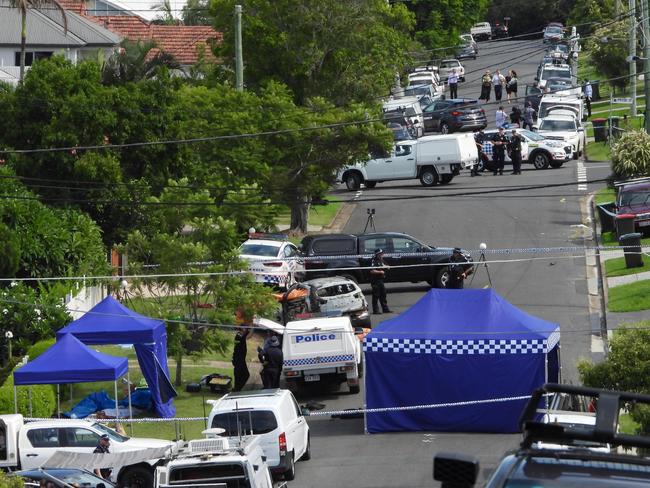
However when he completed the notice, he charged Baxter with the lesser offence of common assault.
Sen Const Kersey said he did that because Hannah had no visible injuries and no medical opinion had been sought about the incident.
However barrister Kylie Hillard, for Hannah’s family, put to him that the Hannah in fact had photos of her injuries and she had been to a doctor.
He said he was not aware of that information.
The court heard Sen Const Kersey agreed that in the minutes between locating Baxter in the shopping centre and walking him to the police beat office, he did not read any further material on Hannah’s case.
He agreed that he “very promptly” decided police would not object to bail despite not having read all of the available material about what Baxter was alleged to have done.
He said he was aware that Baxter was wanted for breaching a domestic violence order and that he was alleged to have grabbed her on the wrist.
The inquest has previously heard Baxter twisted Hannah’s arm and pushed her up against the car, causing an injury.
“You formed this decision that you won’t be objecting to bail before looking any further, that’s right, isn’t it,” barrister Kylie Hillard, representing the Clarke family, said.
She said despite telling Baxter he would need to be sent to the watch house, he minutes later decided to give him a notice to appear.
“You didn’t look at the QP (document detailing the allegations) did you?” she said.
“No. Because I had already issued the PPN (police protection notice) and I had read that.”

It was put to Sen Const Kersey that under the police operating manual, Baxter should have been refused police bail and placed in a show cause position in which he would have to apply for bail in front of a magistrate.
He said he was aware those requirements were in place at the time.
Sen Const Kersey agreed he was aware the temporary protection order had been varied but it did not occur to him to ask Hannah why.
He accepted submissions that affidavit information had been available to him that indicated stalking-type behaviour by Baxter and that should factor into whether someone gets bail.
The court heard that the officer would only have had time to assess the details of the case on the police system between turning off his body-worn camera at 11.24am and serving the notice to appear at 11.33am.
“So there’s only a matter of minutes that you took to actually look at, assuming you had looked at it, … Hannah’s matter concerning this contravention isn’t that correct,” Ms Hillard asked.
“Yes,” he agreed.
Sen Const Kersey said he did not look up a risk assessment that showed Baxter was a “high risk”.
The court heard both Hannah and the officer who worked closely with her, Senior Constable Kirsten Kent, were not told about his decision to downgrade the charge to common assault, which carries a maximum penalty of three years imprisonment, while assault occasioning bodily harm carries a maximum of seven years.
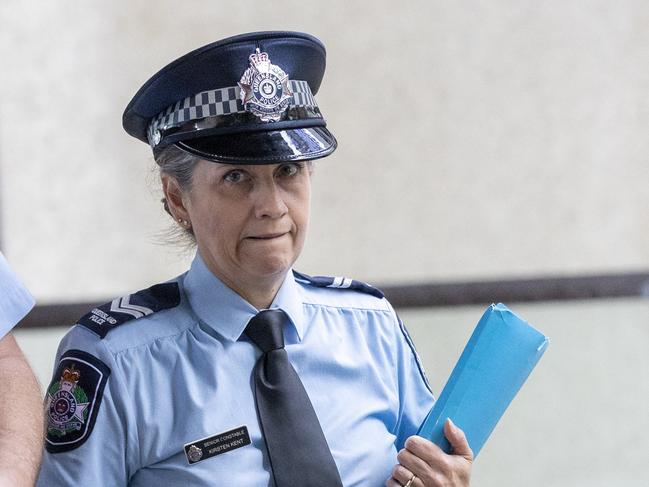
Sen Const Kersey agreed he did not ask Hannah whether she had seen a doctor, or asked if she had any photos of the injury.
“Again on the occurrence there was no medical advice on there,” he said.
“If a full brief was requested then I would have done that.”
Sen Const Kersey agreed he did not consult with the officer who had tasked Baxter’s attack on Hannah as assault occasioning bodily harm when it was downgraded to common assault.
“With the information I had and the evidence I had at the time, I did not believe I could prove that assault occasioning bodily harm had occurred,” he said.
He said he did not read Hannah’s affidavit about Baxter’s behaviour towards her, nor did he read her second affidavit about her allegations he’d been stalking her.
“You didn’t have regard to the threats to kill a previous partner,” Ms Hillard asked.
“No I wasn’t aware of those,” the officer said.
The officer agreed he would have had to go to other sections of his police QLite device to find the information on the assault occasioning bodily harm charge.
Sen Const Kersey said he was not aware that many domestic violence offenders who murder their partners do not have any criminal history.
Sergeant denies downgrading the risk to Hannah from high to medium
Police Sergeant Shane Rolfe took Hannah’s statement the afternoon Baxter assaulted her while Sen Const Kent took a statement from her mother Sue who witnessed the incident. He agreed that Hannah later emailed some pictures of her injuries and he can’t recall whether they were entered in the system electronically or whether Sen Const Kent had physical copies in her file, but said they were retained by police.
Sgt Rolfe repeatedly denied downgrading the risk to Hannah from high to medium, blaming it on Senior Constable Kirsten Kent.
Dr Brasch told the court it was Sen Const Kent who had marked the level of risk as high and suggested she would not have downgraded it – particularly not after Baxter had breached the domestic violence order.
“Does that make any sense to you? A downgrade?” Dr Brasch asked.
“I can’t explain it, no,” he said.
“You were content with it being downgraded?” Dr Brasch said.
“As I said, I didn’t enter (it).”
“I suggest to you, sir, she didn’t because she didn’t do the downgrading. It was you,” Dr Brasch said.
“No, absolutely not,” he said.
Counsel assisting the coroner Jacoba Brasch on Wednesday morning said overnight police had done an audit of the police system and discovered Sgt Rolfe in fact had not downgraded the risk.
Dr Brasch said the “vehemence of his denial makes sense” in light of that new information but said: “Quite frankly in my submission it doesn’t change anything”.
“It is clear Sgt Rolfe’s evidence was true and correct, he was not mistaken and he was certainly not giving any false information,” coroner Jane Bentley said.
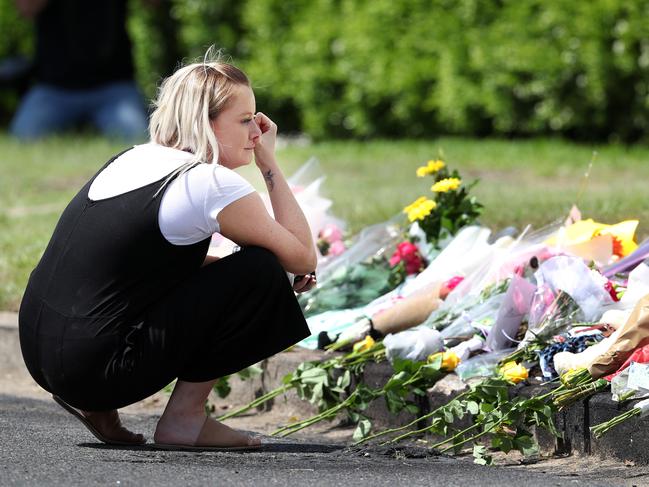
Sgt Rolfe agreed that when he interviewed Hannah on February 2 after Baxter had assaulted her, he did not ask specific risk-assessment questions.
He said he did not ask her whether there had been sexual violence or death threats.
The court heard that not long after the sergeant’s interview with Hannah, Baxter began putting his plan to murder his family in place.
Sgt Rolfe said if Baxter had refused to take part in the interview, he would have arrested and charged him and taken him to the watch house.
However that did not happen and he was instead later charged when Sen Const Kersey saw him at the shopping centre.
DV expert reveals Hannah’s case had 39 lethality indicators
Manager of the State Coroner’s Domestic Violence Death Review Unit Susan Beattie said on average, domestic violence deaths had 12 lethality indicators but in Hannah’s case, there were 39.
The court heard a history of non-lethal strangulation was a very significant predictor for fatal homicides.
In Hannah’s case, she had disclosed to a domestic violence support service that Baxter had strangled her in late 2019 but police officers have claimed they were unaware of that.
Ms Beattie said it had been open to support workers to ask for Hannah’s permission to share that information with police, and they could also have reported it without her consent.
She said in reviewing the Clarke case, she believed Baxter had pushed the limits of the police order designed to protect Hannah and the children.
“He was very smart in terms of being on the line of whether it was a breach or not,” she said.
“He expressed on a number of occasions he was aware of the conditions of the order and denied breaching them.”
Questioned about whether it was common for police to prioritise the pursuit of civil domestic violence action before progressing to criminal breaches and charges, she agreed there did tend to be a preference towards that, perhaps because of a training or resourcing issue.
She said in a lot of cases police would first focus on protection orders before then pursuing breaches and finally criminal charges in relation to perpetrator behaviour.
Senior constable had no training before joining Vulnerable Persons Unit
Senior Constable Stephanie Thomas previously worked at the Upper Mt Gravatt Vulnerable Persons Unit (VPU).
Asked by Counsel assisting the coroner Jacoba Brasch QC whether she had any comment on the level of training she had received, Sen Const Thomas said she was not given any specific training to work at either VPU.
“I’ve been trained as a general duties officer,” she said.
“I applied as a vulnerable person officer because I have a personal interest in it and I firmly believe the unit can provide significant support … for aggrieved and respondents in the act of preventing and stopping domestic violence.”
She conceded that training “could be improved”.
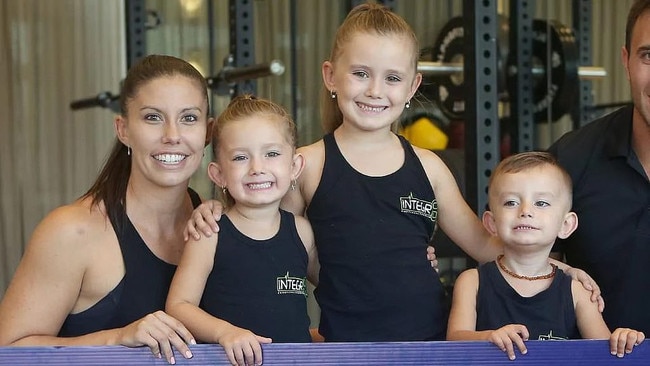
“The training could definitely be improved because we are considered to be specialist officers,” she said.
She said training was provided for other officers considered to be specialists including officers in the Criminal Investigations Branch, the Child Protection and Investigation Unit and the Special Emergency Response Team.
“ … they’re all provided dedicated training prior to commencing their roles and are considered specialists so additional training in relation to what we encounter every day would be beneficial,” she said.
The court heard on January 8, 2020, Sen Const Thomas and two other officers had gone to visit Hannah about 5.30pm.
She said they spoke to Hannah at the front door and could see the children in the kitchen but Laianah, who had been abducted by Baxter a week earlier, remained close to her mother.
Sen Const Thomas said they discussed a number of things with Hannah, including to check if she was engaging with support services, if she was aware what had happened in court with a protection order, and how she could report any breaches.
Dr Brasch suggested to Sen Const Thomas that she and her police partner spent less than an hour speaking to Hannah.
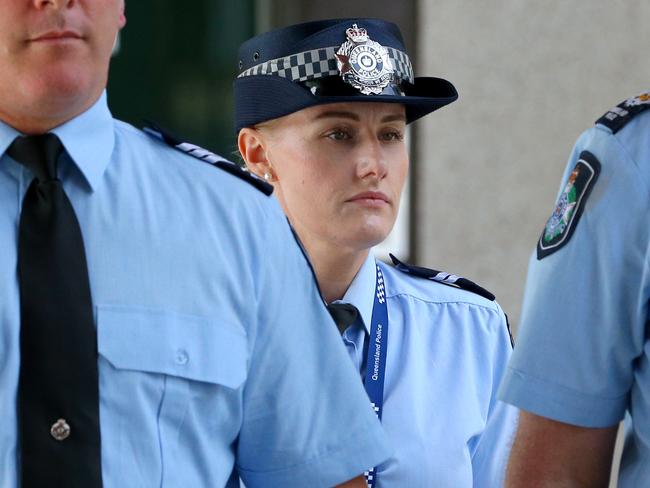
The officer agreed that it would have been beneficial to know that Hannah had reported to a domestic violence support service she’d been subjected to an incident of “non-lethal strangulation”.
“Information sharing would be very beneficial to the Vulnerable Persons Unit,” she said.
She agreed there was no formal information sharing arrangement.
The inquest has heard there is a domestic violence support worker embedded within the police unit.
She said the worker from Brisbane Domestic Violence Service went with them to visit Hannah on that occasion.
“They were in the car with us, so we would be having a briefing on the way to see Hannah,” Sen Const Thomas said.
Asked whether she was provided with the BDVS risk assessment, Sen Const Thomas said: “As a seconded staff member, no, I wasn’t privy to that information.”
Police union boss says DV ‘single most prevalent call we get’
Queensland Police Union president Ian Leavers said 40 per cent of police time was taken up by domestic and family violence on average across the state.
“It is certainly very complex for police, it certainly involves a lot of risk not only for police but for all others involved,” he said.
Mr Leavers said the state average was 40 per cent but in areas like Logan, Kirwan, Goodna and Caboolture, it could be as high as 80 to 90 per cent of calls.
He said domestic violence was the “single most prevalent call we get”.

Mr Leavers sat in the inquest for the evidence of police officers this week.
“What was abundantly clear is that a lot of our police who respond to domestic and family violence are the most junior within our workforce … and that training we cannot underestimate the importance of training especially for junior officers,” he said.
“For our junior police especially over the Covid times the training has been limited and I believe they are put at a substantial risk … that puts victims at a substantial risk as well.
“A lot of police feel like with the lack of training they’re letting victims and the community down through no fault of their own.”
Mr Leavers said a lot of things had changed over the past couple of years – particularly due to the coronavirus pandemic – and “we need to come back to training”.
“Training in that area cannot be something that is put to the side,” he said.
Mr Leavers said domestic violence was not just a policing issue.
“Rehabilitation has to be a cornerstone of what we do,” he said.
Mr Leavers agreed a single domestic violence call-out can take responding police officers four to five hours.
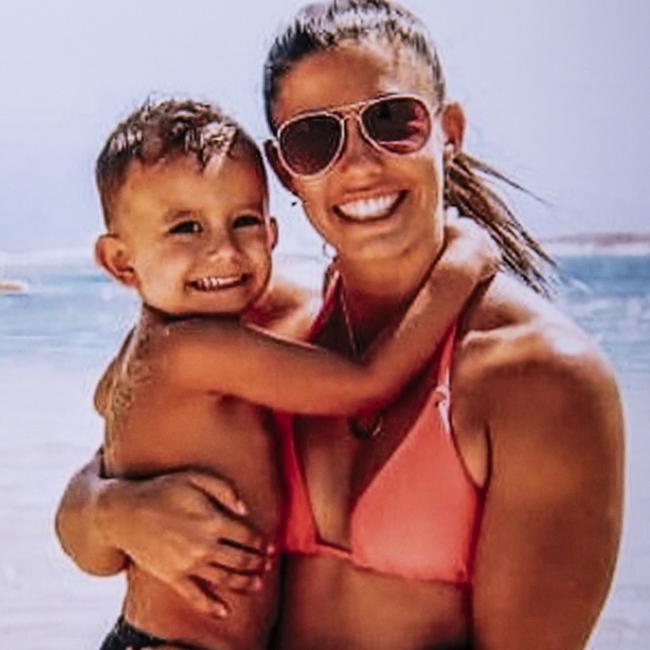
He said in regional and remote areas, it can take even longer because of the limited support services available.
He said in places like Logan and Kirwan, where domestic violence is rife, police have to prioritise which domestic violence call-out they go to depending on the severity.
Mr Leavers said there were also “black spots” throughout Brisbane and Queensland where police can’t access their devices to do background checks on people before responding to an incident.
“You can often go in blind,” he said.
He said “having all the information available” – including family court documents – would assist police in responding to domestic violence.
“This is a national issue, it’s not just a Queensland issue,” he said.
Mr Leavers said in the case of Hannah Clarke, Baxter’s behaviour towards his former partner “would have been invaluable to the police”.
He said the police service needed to streamline its approach to domestic violence so officers can spend more time protecting the community and not tied up with paperwork.
“We need to streamline it. Get rid of the unnecessary paperwork and use technology to its full advantage. It’s 2022,” he said.
Mr Leavers said in his dealings with members of the 12,500 strong police force, the main issue officers raised with him was domestic violence and the complexity of policing it.
He said officers wanted to be able to protect people but needed a more efficient system to do their jobs.
Counsel assisting the coroner Jacoba Brasch QC put to Mr Leavers that training in domestic and family violence for frontline police officers seemed “’pretty ad hoc”, “hit and miss” and “lacking”.
“I would say it’s very lacking, all of the above as you said,” Mr Leavers agreed.
He said the online learning modules “did not cut it” and it did not go far enough to reflect the “complex” and “ever changing” legislation.
“There needs to be a training package which assists police so we can assist the community,” he said.
“Police who are on the front line I will say have been let down by the lack of training.”
Mr Leavers said the online learning products were “not serving the purpose it is designed to do”.

He said coercive control was complex and that it was difficult for inexperienced frontline workers to be able to identify and address.
“You need experience … to pick up those subtle things that have happened from time to time because it may not be clearly evident,” he said.
Mr Leavers agreed that while police domestic violence liaison officers were held up as “specialists” within the service, often they were not and had no more training in that field than their colleagues.
He said people in the vulnerable persons units across the state needed more training and consistency because many would come in for only a month at a time.
“I think we need consistency across the state and we need permanent people there who have the expertise and the commitment to work in that field,” he said.
“I’ve also said domestic violence does not occur just during business hours, it is something that happens 24/7.”
He said the lack of training for people in the so-called specialist roles was “simply not sufficient” and it needed to be immediately addressed.
“We can and should be doing better,” he said.
He said he felt for people on the front line who at times “feel like they failed the victims” but said it was through no fault of their own given the lack of training and support.

The inquest heard Hannah’s case was not referred to the high risk team at the Vulnerable Persons Unit because there were not factors like homelessness involved.
Counsel assisting the coroner Dr Jacoba Brasch detailed several training programs around domestic violence that were either subject to legislative amendments or were dependent on resourcing.
She said none of them had set rollout dates.
The programs were talked about by Acting Superintendent Ben Martain earlier in the inquest.
Mr Leavers said he had long recommended introducing an offence of “commit domestic violence”.
He said in Tasmania, they have the ability to issue domestic violence conditions “on the spot” which can be contested in court later.
He said orders should be able to be served via text message or electronic means instead of police having to track someone down.
Mr Leavers said police needed to embed people from First Nations and other cultural backgrounds to work with police.
“We would need to work with First Nations people because we have cultural issues where people don’t want to leave their environments,” he said.
“Anywhere with First Nations people, they’ve got to be part of the solution as well.”
Mr Leavers said all experts should come together to find a solution.
“I think everything should be on the table and we should have an open mind,” he said.
He said Queensland should look at adopting the Tasmanian model of electronically serving orders and the Victorian system of creating a “multidisciplinary centre” to tackle domestic violence.
“With my colleagues around the country, we don’t try and reinvent the wheel,” he said.
Mr Leavers said Senior Constable Kirsten Kent, as a domestic violence liaison officer, was able to build rapport with Hannah because of her consistent role.
“I’m not aware of all the involvement … but I know officer Kent really invested. She was really personally involved in that,” he said.
“She’s a committed police officer who gave her all.
“I think she did all she possibly could do in the frameworks of the legislation and what we have in place.
“Consistency is paramount.”
Mr Leavers said online courses have their uses but did not compare to face-to-face training.
Asked about an online coercive control training course, he said: “It hasn’t achieved what it was designed to do because it’s so complex and that’s where face-to-face training is so paramount.”
He said most bust frontline police would have done the two-hour course as quickly as possible while answering phones and performing other duties.
Mr Leavers agreed that domestic violence should be annual and “stand-alone” to culturally impart the importance and complexity of the issue for all police officers.
“I think that is really important,” he said.
“We can no longer use the terminology, ‘this is just a DV’.”
He agreed that staff within the Vulnerable Persons Unit should be permanently based there – instead of just the Sergeant and Senior Sergeant positions, as is the case now.
More Coverage
Read related topics:Hannah Clarke




